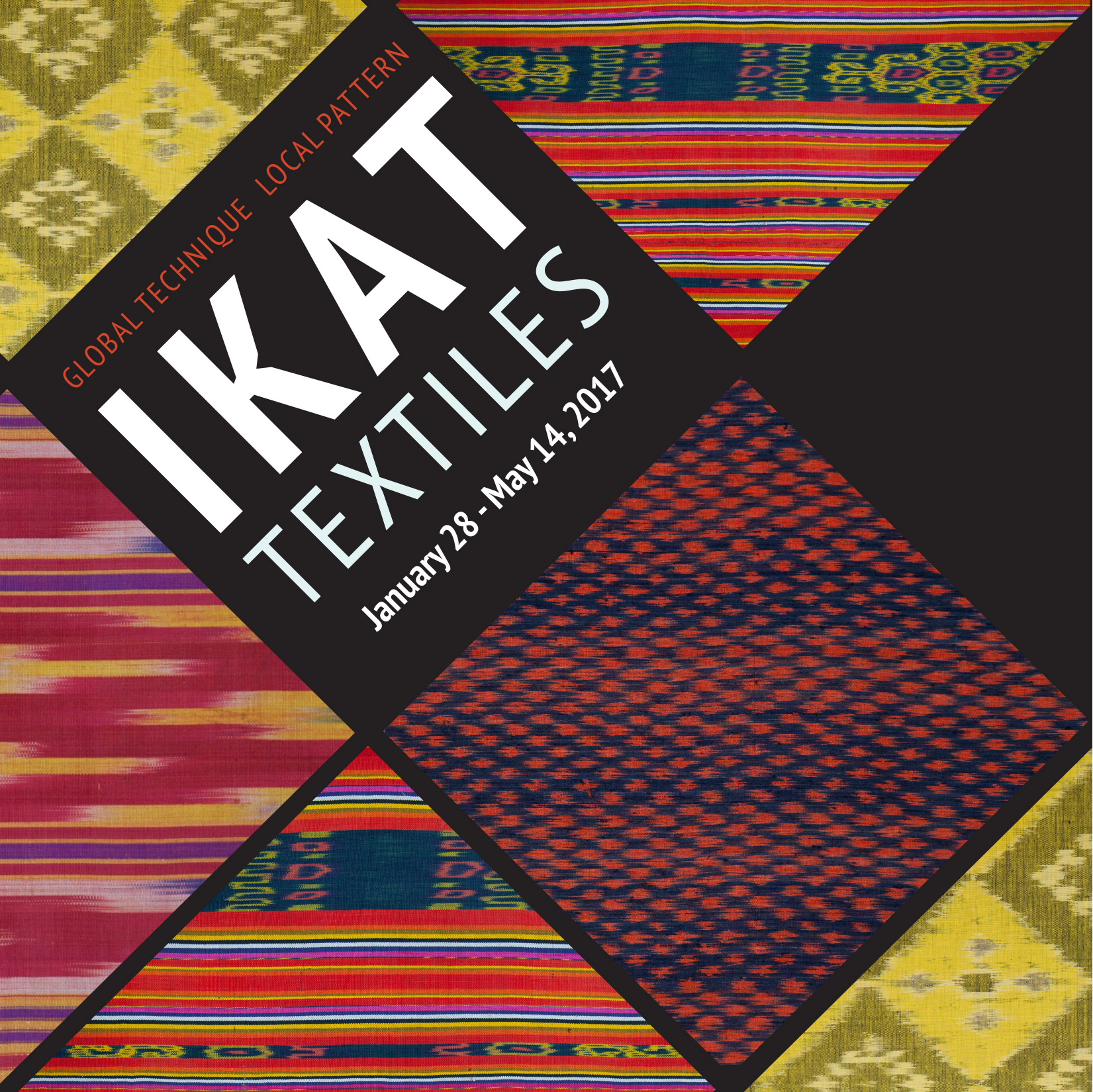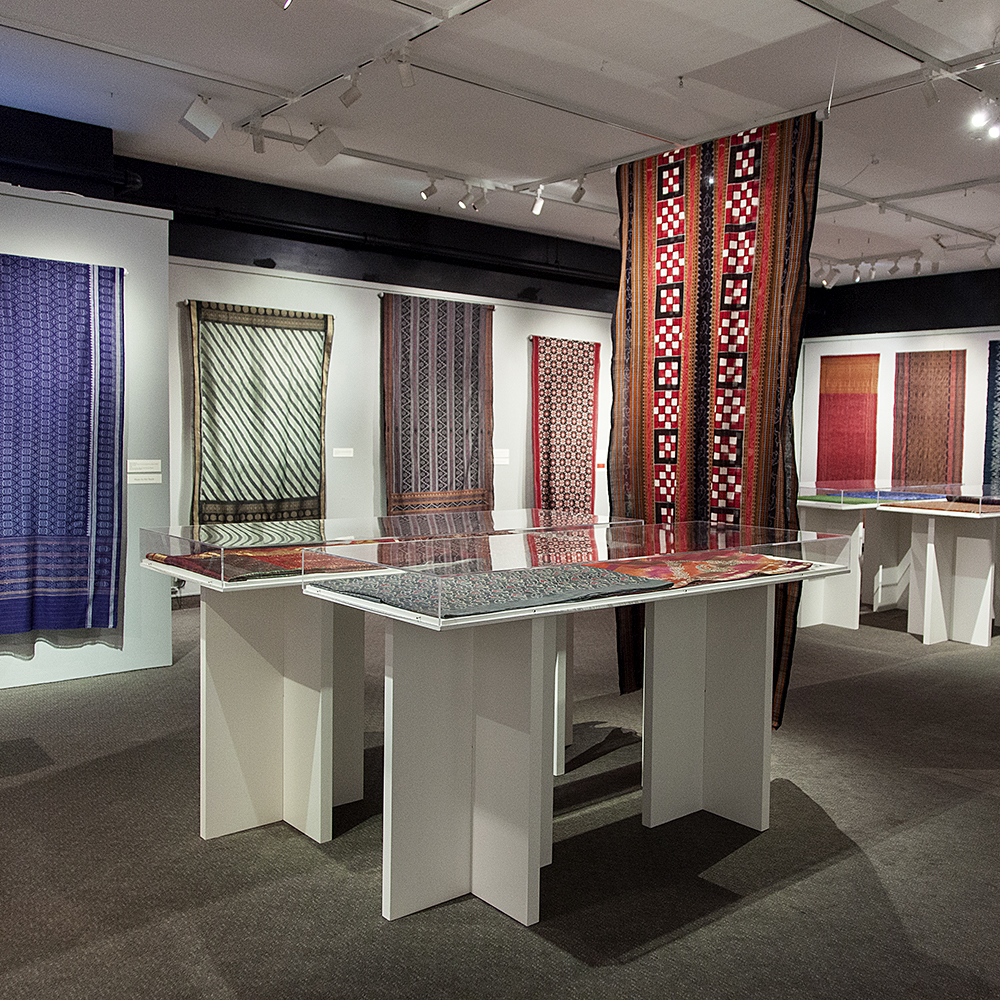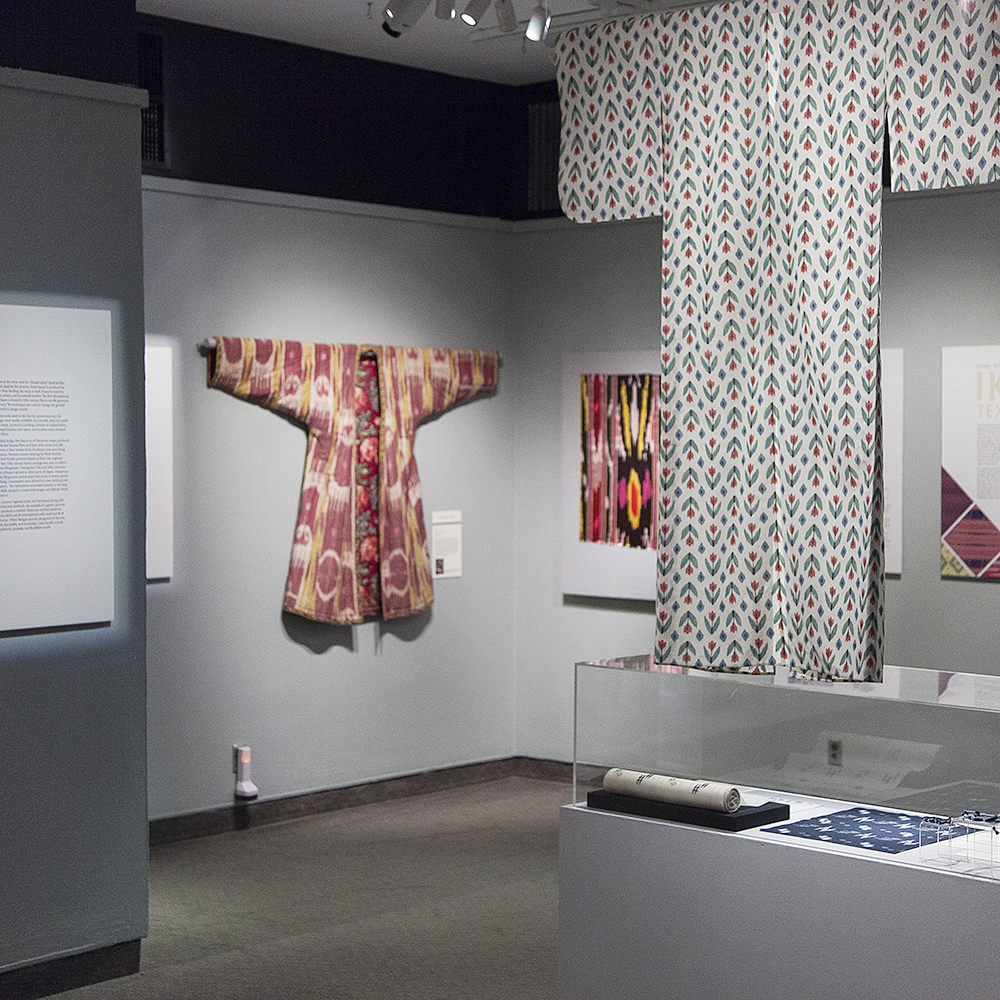
Ikat patterns are both intricate and bold. The feathered edges of the pattern simultaneously expose its hand-crafted nature and the deft skill required to create it. Ikat is a Malay-Indonesian word that means to tie or to bind. In Uzbekistan, these textiles are referred to as abr, which translates to cloud, referencing the soft edges of pattern.
Exhibition Details
Global Technique, Local Pattern: Ikat Textiles
- January 28–May 14, 2017
- Gallery 241
Co-Curators: Jean McElvain and Mary Alice Chaney
Ikat patterns are both intricate and bold. The feathered edges of the pattern simultaneously expose its hand-crafted nature and the deft skill required to create it. Ikat is a Malay-Indonesian word that means to tie or to bind. In Uzbekistan, these textiles are referred to as abr, which translates to cloud, referencing the soft edges of pattern.
The expertise and time that ikat requires makes it a textile that is both admired and mysterious in today’s world of mass produced yardage. Ikat is deeply ingrained in cultural heritage in locations all over the world. In India, for example, ikat is used for basic cotton garments, as well as for the most luxurious silk saris. Central Asian ikat patterns, which are typically larger in scale than the south, date back to the days of Genghis Khan. Textiles from locations such as Indonesia, Thailand, Cambodia, Uzbekistan, Japan and the South American Andes will also be on exhibit.
Exhibition Images





